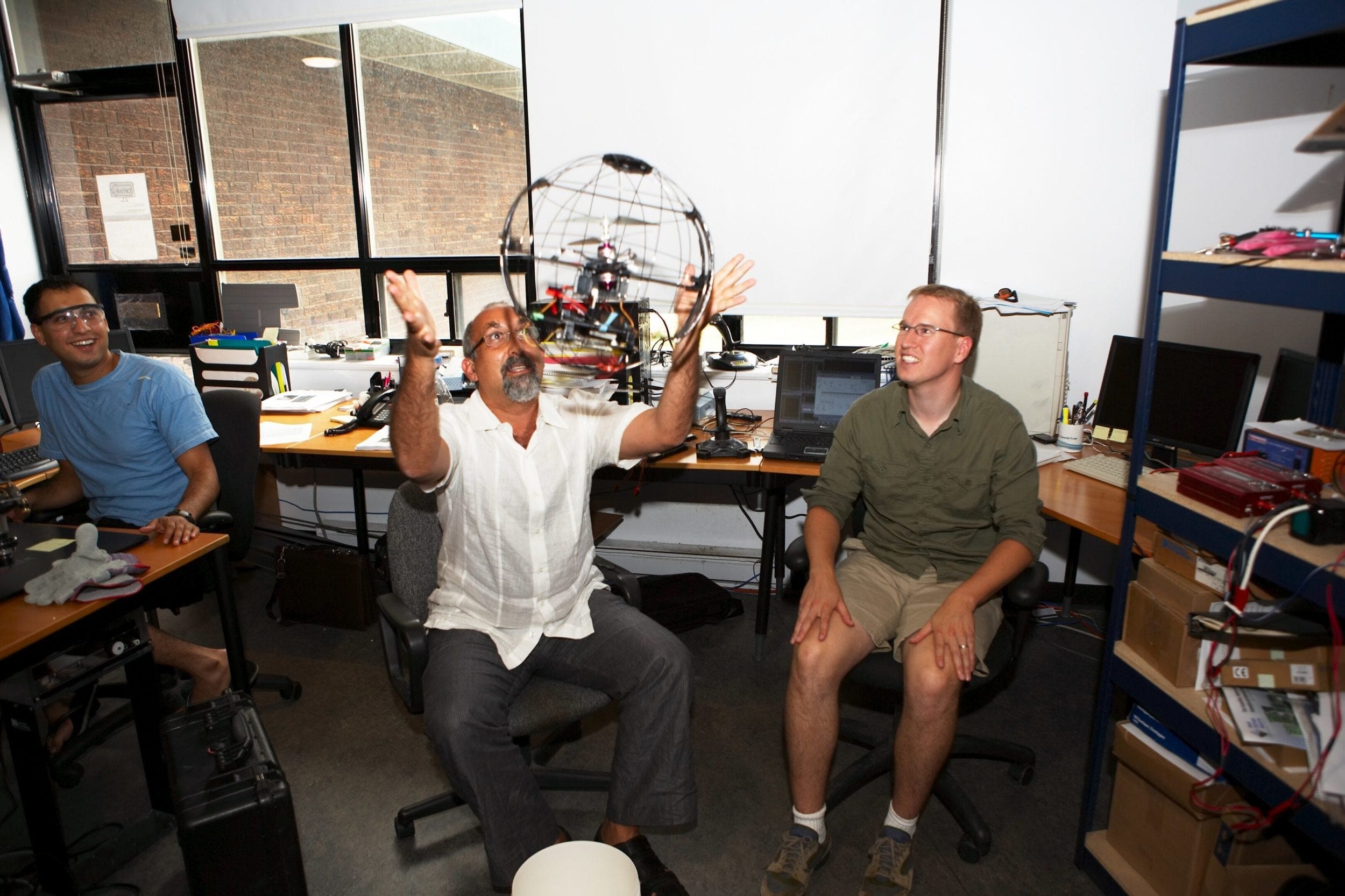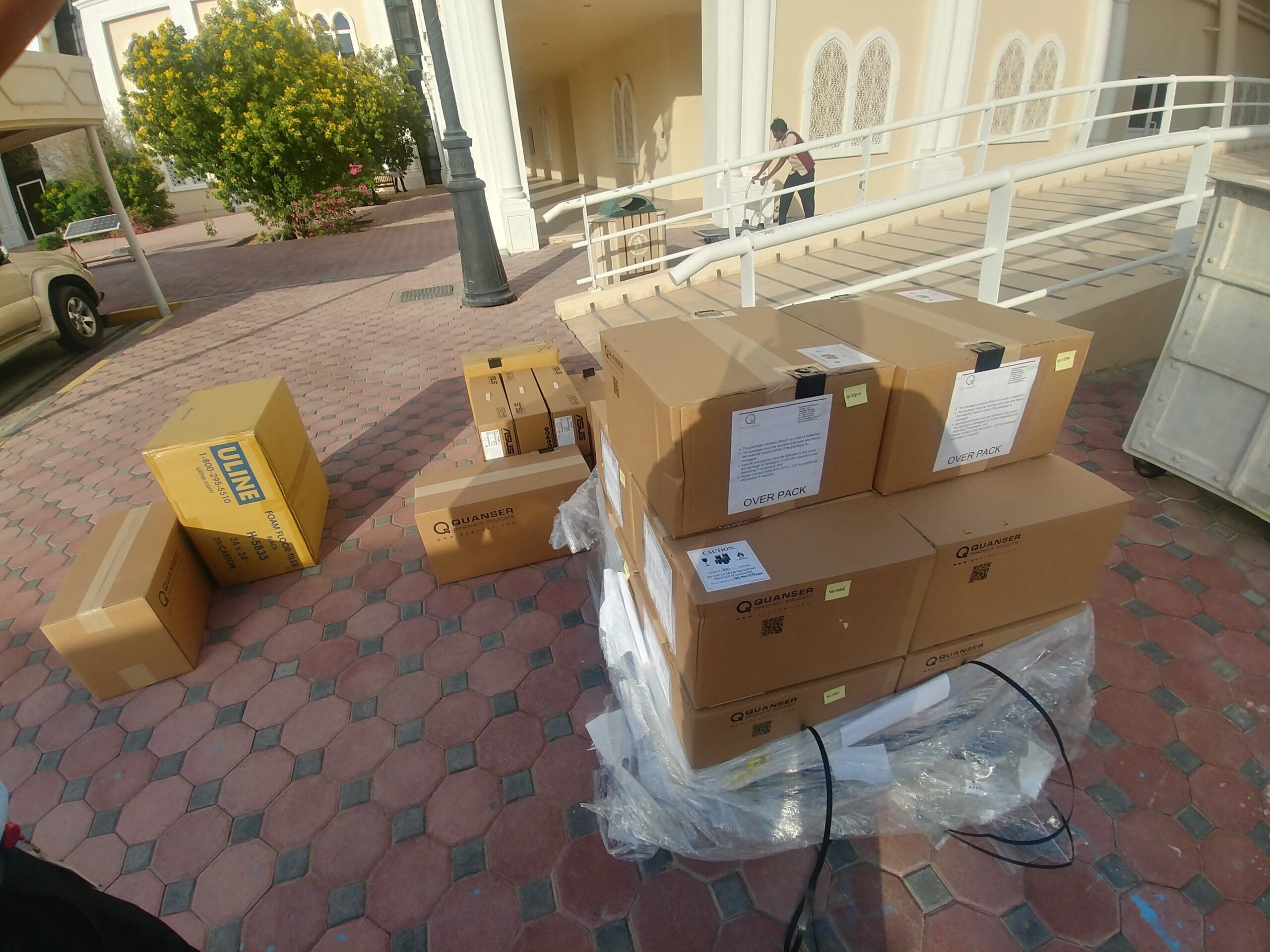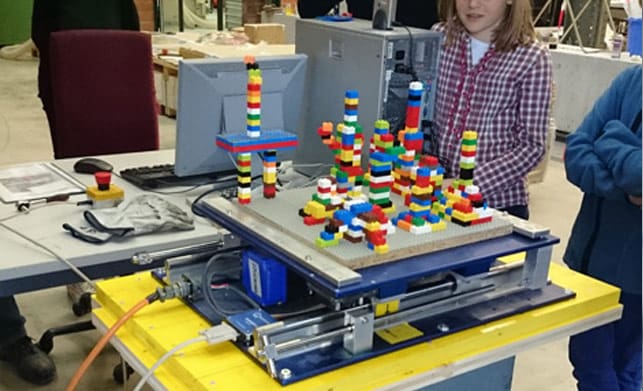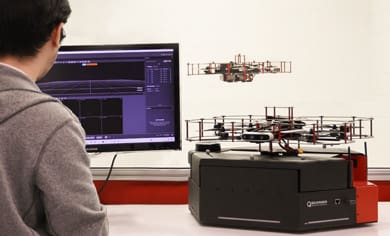
Working at Quanser for a long time, drones became an everyday thing to me, long before they started appearing in the hobby-stores, on the daily news, or in the parks. But watching a recent presentation by the company founder and CTO, Dr. Jacob Apkarian at the launch event for the new Autonomous Vehicles Research Studio, I realized that the “adventure,” as Jacob put it, started even earlier.
Many systems in the early Quanser days were developed to fill very specific needs of professors and researchers. In this case, a request from Dr. Ted Davison from the University of Toronto led to the development of an open-architecture 2 DOF Helicopter system, one of the first commercially-available motion validation systems for research in flight dynamics and aerial vehicle control. The 2 DOF Helicopter was soon followed by a 3 DOF version, another system we called 3 DOF UFO for the lack of a better name, and, finally, our first (though still stationary) quadrotor – 3 DOF Hover. But let Jacob describe the evolution:
With the improvements in IMU, processors and battery technology, actual flight systems became possible and affordable. Quanser responded with the first open-architecture quadrotor solution for indoor autonomous robotics research, the Qball-X4, released in 2007. Later on, we added a Qbot ground robot to expand the scope of research applications into heterogeneous vehicles collaborative missions, formation control, and similar areas. As the technology continued to evolve, and the research interests moved to swarms and vision-based applications, the R&D team got back to the drawing board (or, as the technology has evolved in that field as well, back to the computer screens), tinkered in the testing lab, and came back with a QDrone, the new research-grade quadrotor. Back to Jacob who explains what’s so cool about it:
So what will come next? Stay tuned…





